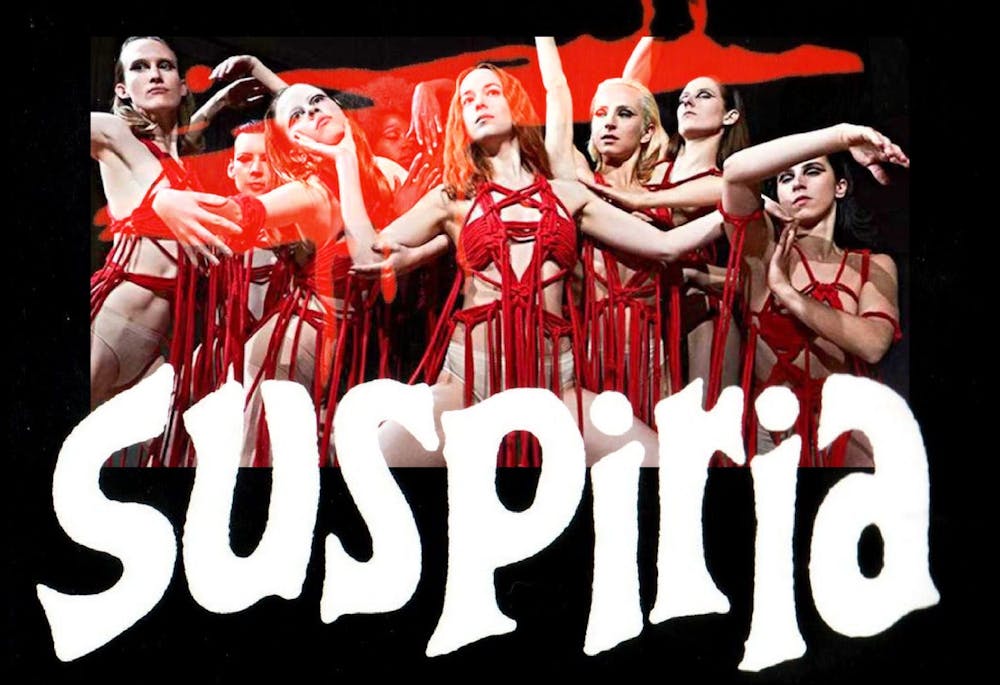When ballerinas pirouette like spinning tops and perform weightless jetés across the stage, the audience is in awe of their grace. Though it may look like their bodies are carried by the wind, dancers must master a great deal of strength and control to appear effortless.
A look behind the curtain shows that the art of dance is rooted in contradiction. Pain and poise go hand–in–hand with vulnerability and violence to achieve a beautiful performance. Horror films that focus on dance and physicality are cinematic studies in manipulation and control, both visually and thematically. Though the list of dance–thrillers is short, it includes compellingly intense films such as The Red Shoes (1948), Suspiria (both the original from 1977 and the 2018 remake), Black Swan (2010), and Climax (2018).
The Red Shoes, loosely based on Hans Christian Andersen’s 1845 fairytale of the same name, set the stage for the dance horror sub–genre. The film differs slightly from Andersen’s original tale. It follows protagonist Vicky on her journey from an undiscovered dancer to the lead in a ballet created specifically for her—The Ballet of the Red Shoes. Vicky's authoritarian and possessive impresario, Boris Lermontov, forces her to choose between dance or her husband Julian right before she is to go onstage.
When Vicky jumps from a balcony to chase Julian, she is hit by a train. It's a mystery whether the death is a suicide or whether she was murdered by the bewitched red shoes, but the tragic story exemplifies the obsessive nature of dance—it is all–consuming, and in Vicky's case, leaves no room for love. It orbits around the film's iconic dialogue, where Lermontov asks Vicky, "Why do you want to dance?"
Her response: "Why do you want to live?"
The almost supernatural forces that compel dance in horror films are also featured in Suspiria. The 1977 original by Dario Argento is kitschy and colorful, whereas Luca Guadagnino’s 2018 remake features a muted color scheme and bleeds deep red. The films tell the story of a renowned dance academy in Germany, which, unbeknownst to the young dancers, is run by a coven of witches. The witches use the academy as a trap to find vessels to possess and inhabit. When some dancers begin to suspect the ruse, they are brutally murdered.
In a harrowing scene from Guadagnino’s version, protagonist Susie performs a dance for the matrons—meanwhile, in an adjacent room, a dancer named Olga is jolted, twisted, and mangled as her body is manipulated to involuntarily mirror Susie's jumps and spins. Guadagnino’s Suspiria juxtaposes grace and swiftness with jagged, grotesque movements. Many times, dancers perform in a bewitched trance, as if someone else is controlling their limbs like puppets. Susie becomes a sacrificial lamb for the matrons of the coven, representing the objectification of dancers' bodies and the horror of losing control.
Climax is similar, both in terms of visual imagery and its themes of free will. In the film, an alternative dance troupe rehearses and celebrates in an abandoned school. It starts with a beautiful performance that becomes "progressively more hideous,” as the dancers realize their drinks have been spiked with LSD. Though this film deals with more psychological themes, director Gaspar Noé's knack for body horror is evident as the dancers literally spiral out of control on the dance floor.
Darren Aronofsky’s Black Swan examines both the physical and psychological tolls of obsession through dance, covering all the basics of the dance horror genre. The film takes a more realistic path; instead of being possessed by witches or tripping on hallucinogens, protagonist Nina is the antagonist of her own story.
Nina is given the opportunity to play both the white swan and the black swan as a dual role in her ballet's performance of Swan Lake. She embodies the white swan—perfect, pure, and controlled. However, she struggles to be as mysterious and seductive as the black swan. Artistic director Thomas tries to make her feel more free by telling her, “Perfection is not just about control, it’s also about letting go.”
Describing Nina as an obsessive protagonist would be an understatement. She scratches her skin out of stress until she bleeds; as the film unravels, so does Nina’s sanity. She suffers hallucinations of an evil doppelgänger, and struggles with violent impulses toward a fellow dancer named Lily. The film is unclear as to whether Lily is real or Nina's delusion. After performing perfectly on stage, the audience realizes Nina stabbed herself in the abdomen during a delusion.
Black Swan serves as a metaphor for pushing yourself far beyond your limits to the point of self–sabotage and self–destruction. Nina and her evil alter ego parallel the white and black swans. Ultimately, the role consumes her, as she gives in to her dark side.
Just as dance is a mesmerizing representation of the body's physical limits, dance horror is intoxicating in its grotesque exploration of the body. The genre has produced visually stunning films that showcase the disturbing nature of losing control of—or destroying—your mind and body. Lermontov sums up the genre the best in his warning that "the great impression of simplicity can only be achieved by a great agony of body and spirit.”

